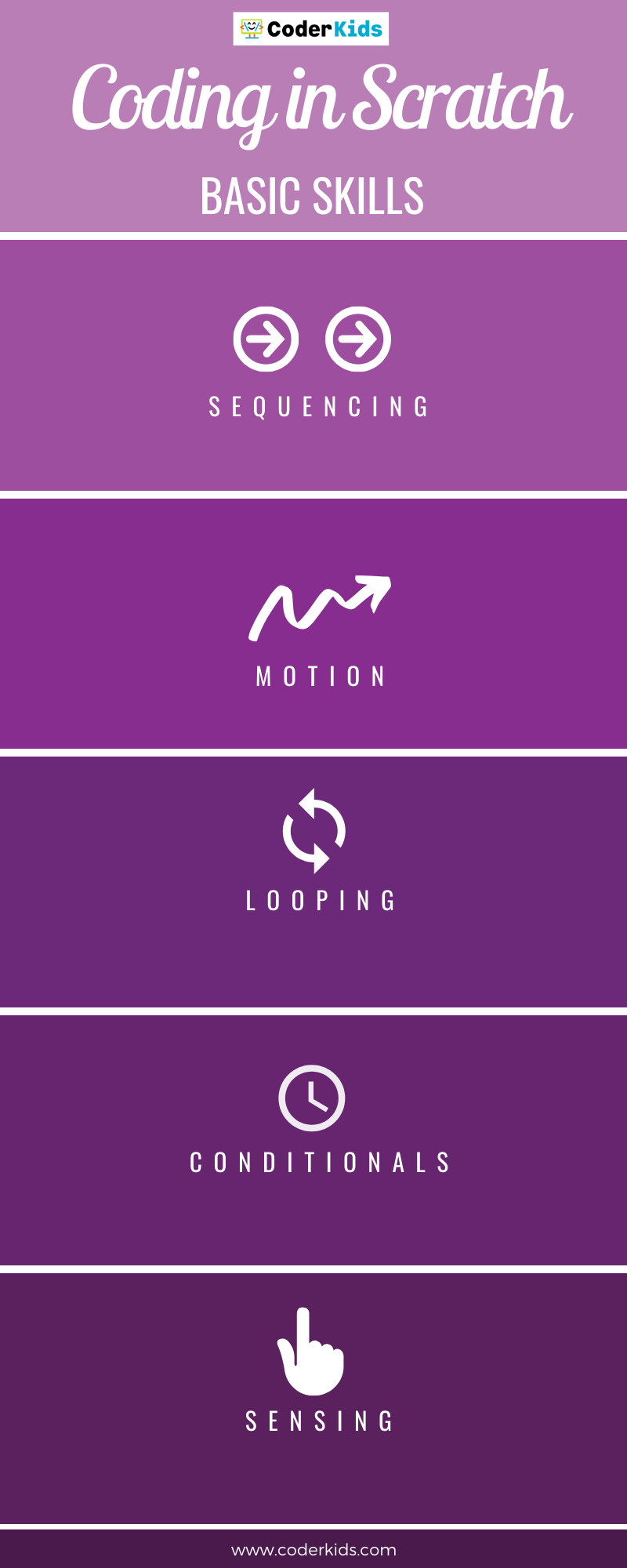What is Coding in Scratch?
For information about Coder Kids classes and camps on a variety of topics, visit register.coderkids.com/onlineclasses.
Coding in Scratch is one of the most popular courses we teach here at Coder Kids! We offer it for after school programs, as well as for week long summer camps. Coding in Scratch is designed for older elementary aged students and our courses are usually for grades 3-5.
Scratch is a programming language designed by MIT for children learning to code. It teachers beginners the fundamentals of coding so that they can move on to more advanced programming languages. Scratch is a block-based programming language. So, instead of typing in specific words and phrases, in Scratch, you use different blocks. Although Scratch is designed for beginners, you can make a wide variety of projects, from simple animations to complicated games and interactive animations.
We focus on a five key skills in our Coding in Scratch classes that will continue helping our students even after they have moved on to more advanced programs. They are: Sequencing, Motion, Looping, Conditionals and Sensing.
(You can look at this blog post for definitions of Scratch vocabulary)
Sequencing
Sequencing refers to the order in which commands are given. The order of commands has a large effect on how/if your code will work. As projects become more challenging, the order of commands becomes increasingly complicated
Motion
Motion refers to the movement of sprites (characters or objects) in a project. As proficiency in motion improves, games and animations can become more advanced, and the quality and smoothness of projects also increases.
Looping
Looping is a sequence of instructions that is continually run until a certain condition is reached. For example, it could be a certain number of times (1, 20, 50, forever) a sprite does something or it could mean doing something until a certain number, location, touch, etc. is reached.
Conditionals
Conditional statements tell a program to do different actions depending on whether a condition is true or false. This involves coding with if-then statements, or using “when” and “until” statements in Scratch.
Sensing
Sensing is a category of coding blocks in Scratch. They are used to code for detecting things. They can be used to detect location of the mouse, distance to another sprite or if you are touching another sprite.
How We Teach The Skills
We teach these skills through a variety of projects that include games and animations. We always allow room for creativity in our projects. Students are given the basic guidelines of what to include, but how they do it and which backgrounds, sprites, sounds, colors, etc., is always up to them. For each project, we also have different levels of difficulty. This way, if a base project one week is easier for a student than other projects, there are still more things to work on. These varying levels of difficulty are also included so that students who have had class with us before will still be challenged and learning new things.
A Typical Class
Typically, Coding in Scratch classes start with a short lesson and introduction of the project, and then the students have time to complete their projects. The instructor(s) is always available to help students problem solve and bring their ideas to life. At the end of the session (end of the semester or summer camp week), students will have a portfolio of their work that they can show to their friends and family.
Conclusion
We work hard to have new, creative and challenging projects each semester for Coding in Scratch! We develop different curriculums so that students will not be repeating the same projects over and over again. We love Coding in Scratch and we want our students to, too!
As an Amazon Associate, Coder Kids earns from qualifying purchases.















